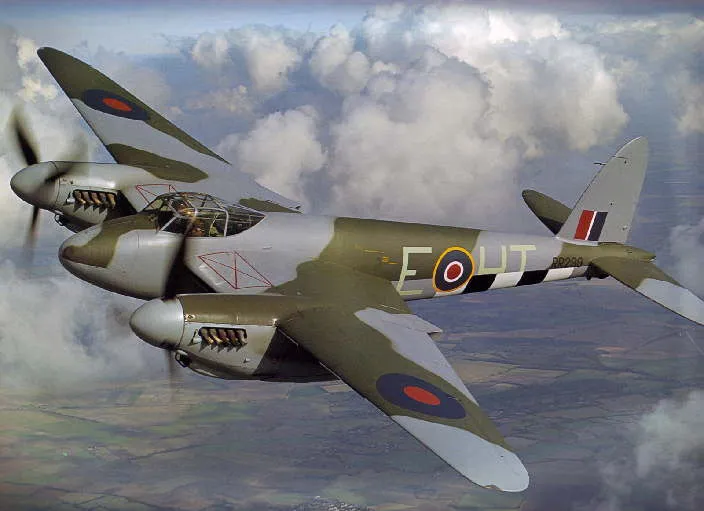Post from Walden's grandson in RAF Commands 28 June 2014 - Woodrow was a Canadian Civilian pilot (working for De Havilland of Canada) who was on his first Ferry run when lost with his Navigator Tom Scotland.He was also a staff pilot at the No 1 Air Observer School, Malton, Ontario and the Canadian Aviation publication manager just before moving over to the AOS in Malton
The De Havilland Canada Story by Fred W Hotson pages 86-7Walden, Woodrow (Civilian)
Killed in Flying Accident 1945-03-06


Birth Date: 1915
Born:
Home: Toronto, Ontario
Enlistment:
Enlistment Date: Unknown
Service
RCAF
Unit
45 Group (RAF)
Base
Dorval, Quebec
Rank
Civilian
Position
Civilian
Service Numbers
Mosquito B.Mk. 25 KB593
Ferry Flight 1945-March-06 to 1945-March-06
45 (T) Group (RAF) Dorval, Quebec
45 Group RAF Transport Command, Dorval, Quebec. Mosquito aircraft KB 593 disappeared on a flight between Gander, Newfoundland and Lagens, Azores, cause not determined
Canadian Civilian Pilot and De Havilland Canada employee "Woody" Woodrow, on his first ferry flight and his Navigator/Wireless Operator, British Civilian Tom Scotland were both missing, presumed killed in this flying accident, most likely a weather-related loss
Ocean Bridge, The History of RAF Ferry Command by Carl A Christie pages 236, 327de Havilland Mosquito

The de Havilland DH.98 Mosquito was a British twin-engine shoulder-winged multi-role combat aircraft, introduced during the Second World War. It was one of few operational front-line aircraft of the era whose frame was constructed almost entirely of wood. Nicknamed The Wooden Wonder, it was affectionately as the "Mossie" to its crews. The total number of DH98 Mosquito aircraft built was 7,781, the type serving with the main Allied air forces, including both the United States and Russia.
When Mosquito production began in 1941 it was the fastest propeller driven operational aircraft in the world. The first variant was an unarmed, high-speed, high-altitude photo-reconnaissance aircraft. Originally conceived as an unarmed fast bomber, the Mosquito's use evolved during the war into many roles including low to medium-altitude daytime tactical bomber, high-altitude night bomber, pathfinder, day or night fighter, fighter-bomber, intruder, and maritime strike aircraft. It was also used by the British Overseas Airways Corporation (BOAC) as a fast transport to carry small high-value cargoes to, and from, neutral countries, through enemy-controlled airspace. The crew of two, pilot and navigator, sat side by side, but a single passenger could ride in the aircraft's bomb bay when necessary.
The Mosquito FB Mk. VI was often flown in special raids, such as Operation Jericho, an attack on Amiens Prison in early 1944, and precision attacks against military intelligence, security and police facilities (such as Gestapo headquarters). On the 10th anniversary of the Nazi' seizure of power in 1943, a morning Mosquito attack knocked out the main Berlin broadcasting station while Hermann Goering was speaking, putting his speech off the air. Goering later said: "It makes me furious when I see the Mosquito. I turn green and yellow with envy. There is nothing the British do not have. They have the geniuses and we have the nincompoops."
The Mosquito flew with the RCAF and other air forces in the European, Mediterranean and Italian theatres. After the end of the Second World War Spartan Air Services flew 10 ex-RAF Mosquitoes, mostly B.35's plus one of only six PR.35's built, for high-altitude photographic survey work in Canada. There are approximately 30 non-flying Mosquitos around the world with five airworthy examples, four in the United States, and one in Canada. Harold Skaarup web page and Wikipedia
 BAE Systems (formerly De Havilland)
BAE Systems (formerly De Havilland)
 Toronto, Ontario
Toronto, Ontario Commonwealth War Graves Commission
Commonwealth War Graves Commission www.findagrave.com
www.findagrave.com
 [Royal Air Force Serial and Image Database]...
[Royal Air Force Serial and Image Database]... Mosquito
Mosquito Wikipedia Mosquito
Wikipedia Mosquito USAAF F-8 Mosquito Serial Numbers
USAAF F-8 Mosquito Serial Numbers Mosquitos shipped to Taiwanese Airforce
Mosquitos shipped to Taiwanese Airforce